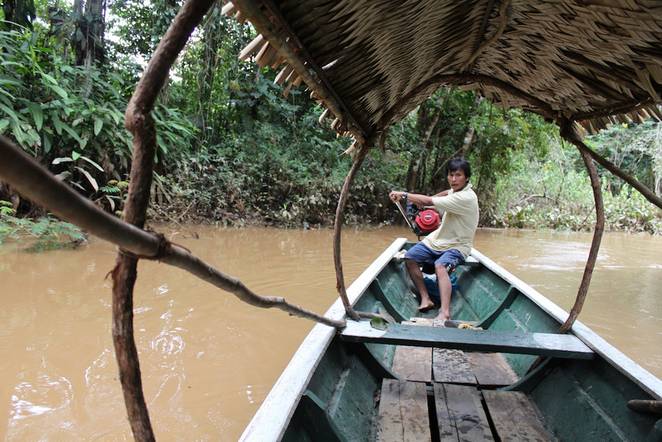A primitive Amazonian tribe appears to have the best heart health in the world, living a simple existence that inadvertently provides them extraordinary protection against heart disease, researchers report.
The Tsimane people of Bolivia lead an active life of subsistence farming and foraging for food in the Amazon rainforest, said study author Dr. Gregory Thomas, medical director of the Memorial Care Heart & Vascular Institute at Long Beach Memorial, in California.
Thanks to their unique lifestyle, most Tsimane have arteries unclogged by the cholesterol plaques that drastically increase the risk of heart attack and stroke in modern Americans, Thomas said, cbsnews.com reported.
CT scans revealed that hardened arteries are five times less common among the Tsimane than in US adults.
“We found that based on their lifestyle, 85% of this population can live their whole life without any heart artery atherosclerosis [hardening]. They basically have the physiology of a 20-year-old.”
The Tsimane also have lower heart rates, blood pressure, cholesterol and blood sugar levels compared to the rest of the world, he added.
Thomas and his colleagues have been studying mummies for ancient evidence of heart disease, and have found hardened blood vessels in mummies as old as 3,500 years.
CT scans that look for calcium deposits in arterial plaques confirmed the Tsimane have the youngest-looking arteries of any population recorded to date.
The scans showed that almost nine in 10 of the Tsimane (85%) had no risk of heart disease because they had no arterial plaques. About 13% of those scanned had low risk, and only 3% had moderate or high risk.
All this good health can be tracked to the way the Tsimane live, Thomas said. They are subsistence farmers; during the day, the men hunt and fish while the women work the farms and tend to children.
Because of this, the men are physically active 6 to 7 hours daily, and tend to average 17,000 steps a day, Thomas said. The women are physically active 4 to 6 hours a day, and average about 16,000 steps.
The Tsimane also consume a very fresh, extremely low-fat diet, eating only what they can grow or catch. Nearly three-fourths of what they eat is non-processed carbohydrates, such as rice, plantains, corn, nuts and fruits, and their protein comes from lean wild game and fish.
The tribe’s members rarely smoke. “They mainly use cigarettes to burn these huge flies out of their skin, down there in the rainforest.”
The results suggest that urbanization could be considered a risk factor for hardening of the arteries, as modern people leave behind lives of struggle for a more cushy existence, he said.


